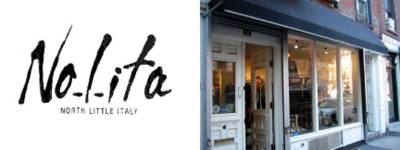Fashion-Savvy TTAB Says "No" To "NO-L-ITA"
A "hip" Board panel affirmed a refusal to register the mark NO-L-ITA NORTH LITTLE ITALY for various clothing items on the ground that the mark is primarily geographically deceptively misdescriptive because it identifies the fashion-trendy "Nolita" area of New York City. In re Fashion Group S.N.C., Serial No. 76006037 (December 3, 2004) [not citable].

Last year in In re California Innovations, Inc., 66 USPQ2d 1853 (Fed. Cir. 2003) the CAFC ruled that the PTO must deny registration of a mark under Section 2(e)(3) if:
(1) the primary significance of the mark is a generally known geographic location;Applicant Fashion Group did not dispute that the term "Nolita" may refer to an area of New York City, and it stated that its goods do not come from any locale so known. However, it argued that "Nolita" is a term recently "dreamed up" by real estate brokers and is already "on the wane," that there is no one place known as "Little Italy" or "north of Little Italy" and thus purchasers would not associate its goods with New York City, and that in any event there is no evidence that such an association would materially affect purchasing decisions.
(2) the consuming public is likely to believe the place identified by the mark indicates the origin of the goods bearing the mark, when in fact the goods do not come from that place; and
(3) the misrepresentation was a material factor in the consumer's decision. 66 USPQ2d at 1858.
The record evidence, however, included dozens of NEXIS articles showing that Nolita primarily signifies a geographic location, generally recognized as a New York City neighborhood among "those who follow the fashion industry, as well as among travel agents or travel writers," and even among casual readers of newspapers across the country.
The record also demonstrated that Nolita is associated with "clothing designers and retailers, many of whom have apparently found the neighborhood a suitable location for their businesses."
And, finally, as to the issue of materiality, California Innovations held that "if there is evidence that goods like applicant's or goods related to applicant's are a principal product of the geographical area named by the mark" or if "the place is noted for the particular goods," deceptiveness is likely. 86 USPQ2d at 1857. The evidence "established that clothing designers are concentrated in the neighborhood and that it is known for its trend-setting and unique clothing boutiques. " The Board therefore concluded that "for consumers, the origin of clothes in 'Nolita' is a material factor in their shopping decisions."




0 Comments:
Post a Comment
<< Home